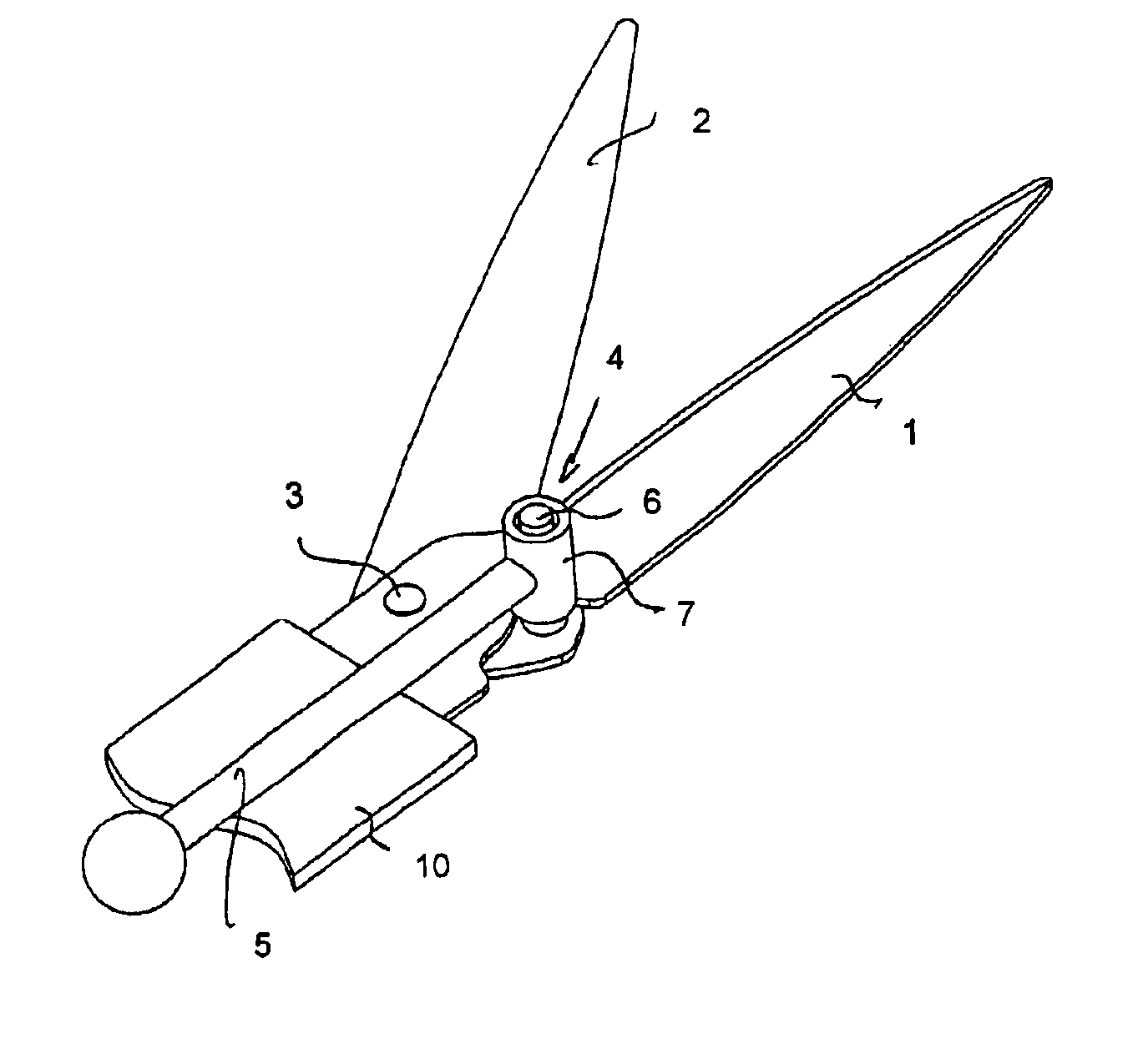Shears
a technology of shears and cutting tools, applied in the field of shears, can solve the problems that the solution employed in the above-mentioned u.s. patent no. 3,613,240 cannot be regarded as optimal in every way, and the tilting torque no longer increases
- Summary
- Abstract
- Description
- Claims
- Application Information
AI Technical Summary
Benefits of technology
Problems solved by technology
Method used
Image
Examples
Embodiment Construction
[0011]FIGS. 1 and 2 show shears according to an embodiment of the invention in an open and a closed position, respectively. Only parts of the shears relevant to the invention are shown. The main part of an operating mechanism has thus been omitted but alternative implementations thereof will be discussed below.
[0012]The shears disclosed in FIGS. 1 and 2 comprise a blade 1 which is stationary during a shearing movement of the shears, and a second blade 2 which moves during the shearing movement of the shears and which is connected to the blade 1 by a rivet-like joint 3. This articulated joint allows the blade 2 to turn with respect to the blade 1 around the joint 3. In the embodiment shown in FIGS. 1 and 2, the joint 3 is shown to be a stiff one, i.e. a relatively tight joint with little play. Such pivoting is common in conventional scissors for cutting paper, for instance.
[0013]If the shears of the invention are to be used for other purposes, e.g. as grass shears, a spring is conven...
PUM
 Login to View More
Login to View More Abstract
Description
Claims
Application Information
 Login to View More
Login to View More - R&D
- Intellectual Property
- Life Sciences
- Materials
- Tech Scout
- Unparalleled Data Quality
- Higher Quality Content
- 60% Fewer Hallucinations
Browse by: Latest US Patents, China's latest patents, Technical Efficacy Thesaurus, Application Domain, Technology Topic, Popular Technical Reports.
© 2025 PatSnap. All rights reserved.Legal|Privacy policy|Modern Slavery Act Transparency Statement|Sitemap|About US| Contact US: help@patsnap.com


